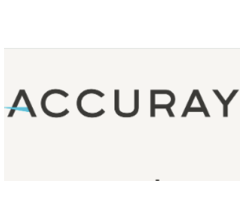September 26, 2016 — A new analysis of Veteran’s Affairs Central Cancer Registry records demonstrates a clear positive impact of increased stereotactic body radiation therapy (SBRT) use for stage 1 non-small cell lung cancer (NSCLC) patients. Escalated adoption of this advanced form of radiation therapy (RT) from 2001 to 2010 was associated with substantial increases in overall survival (OS) rates and lung cancer specific survival (LCSS) rates.
The research was presented at the 58th Annual Meeting of the American Society for Radiation Oncology (ASTRO).
“Lung cancer causes more than one million deaths each year worldwide,” said Matthew Boyer, M.D., Ph.D., lead author of the study and a resident in radiation oncology at Duke University in Durham, N.C. “Moreover, an increasing number of localized, or stage I, lung cancer diagnoses are occurring, due to an aging population and advanced screening techniques.”
While the majority of patients with stage I NSCLC underwent surgery, RT is recommended for patients who cannot tolerate surgery or desire non-surgical management. SBRT, which was developed in the 1990s, uses advanced imaging techniques to deliver highly-targeted radiation to a tumor and limit damage to surrounding tissue. Preserving healthy tissue is particularly important for NSCLC patients, whose tumors are located near or in essential organs including the heart and lungs.
Researchers sought to determine whether the increased use of SBRT in recent years had a subsequent impact on the outcomes of patients with NSCLC. Using the Veteran’s Affairs Central Cancer Registry (VACCR), they identified more than 14,000 patients diagnosed with stage I NSCLC from 2001 to 2010, including 3,012 records of patients who received RT as their primary treatment. From this cohort, 468 patients were identified who had SBRT and 1,203 patients who received conventional RT (i.e., the CRT group). Data regarding fractionation, co-morbidities, treatment toxicity, positron emission tomography (PET) utilization and vital status were obtained from the VA Corporate Data Warehouse (VACDW).
Primary outcomes included rates of overall survival (OS) and lung cancer-specific survival (LCSS) measured at four years following RT. Researchers computed hazard ratios (HR) to compare OS and LCSS rates and changes in survival rates between the SBRT and CRT groups, as well as employed multivariate analysis to assess the influence of participant characteristics on survival outcomes.
The average age of study participants was 72, and 98.6 percent of patients were male. At the time of diagnosis, nearly nine in 10 patients (89.4 percent) were current or former smokers. In terms of disease type, 50.5 percent of patients were diagnosed with stage IA NSCLC, and 41.5 percent were diagnosed with squamous cell carcinoma.
Average survival rates for all patients increased over the study period, as did the use of SBRT. Four-year OS for study participants as a whole who underwent radiation rose from 12.7 percent to 28.5 percent and four-year LCSS rose from 33.9 percent to 50.4 percent, concurrent with increased utilization of SBRT from 4.7 percent to 60.3 percent.
At four years follow-up, both overall and lung cancer-specific survival rates were significantly higher for SBRT patients than for CRT patients. By Kaplan-Meier analysis, four-year OS was 37 percent for SBRT patients, which was significantly higher than the 18.8 percent OS rate for CRT patients (HR, 0.60; p < 0.001). This improvement in OS was largely due to an increase in LCSS, which, at four years, was 53.2 percent for patients treated with SBRT as compared to 28.3 percent for patients treated with CRT (HR, 0.39; p < 0.001).
On multivariate analysis, treatment with SBRT versus CRT was associated with a nearly 30 percent reduction in the risk of death (HR, 0.72; p < 0.001). In addition, older age (HR, 1.01 per year; p = 0.022), higher Charlson co-morbidity score (HR, 1.52 for a score of 2 vs. 0; p < 0.001) and higher stage (HR, 1.39 for Stage IB vs. IA; p < 0.001) were associated with improved survival. Notably, there was no significant difference in survival on multivariate analysis based on receipt of PET scans for staging (HR, 0.88; p = 0.084) or treatment era (HR, 0.93 for 2006-2010 vs. 2001-2005; p = 0.317), indicating that the doubling in survival for patients receiving radiation was strongly correlated with increased utilization of SBRT and not with improved staging with PET scans or other improvements in treatment and care over the same time period.
“It is very rare for a study to show that double the number of patients were likely to be alive at four years due to the introduction of a new treatment,” said Boyer. “We identified that this doubling was due to the introduction of these advanced radiation techniques collectively termed stereotactic body radiation therapy, or SBRT. These findings of improved survival in stage I lung cancer patients in general, and those undergoing radiation specifically, are generalizable to patients outside the VHA. Although a number of studies are underway to define the best treatment for stage I non-small cell lung cancer, our study and others indicate that advances in radiation treatment and delivery can improve patient survival, and that SBRT should be the standard treatment for patients treated with radiation for stage I NSCLC.”
For more information: www.astro.org


 December 11, 2025
December 11, 2025 









